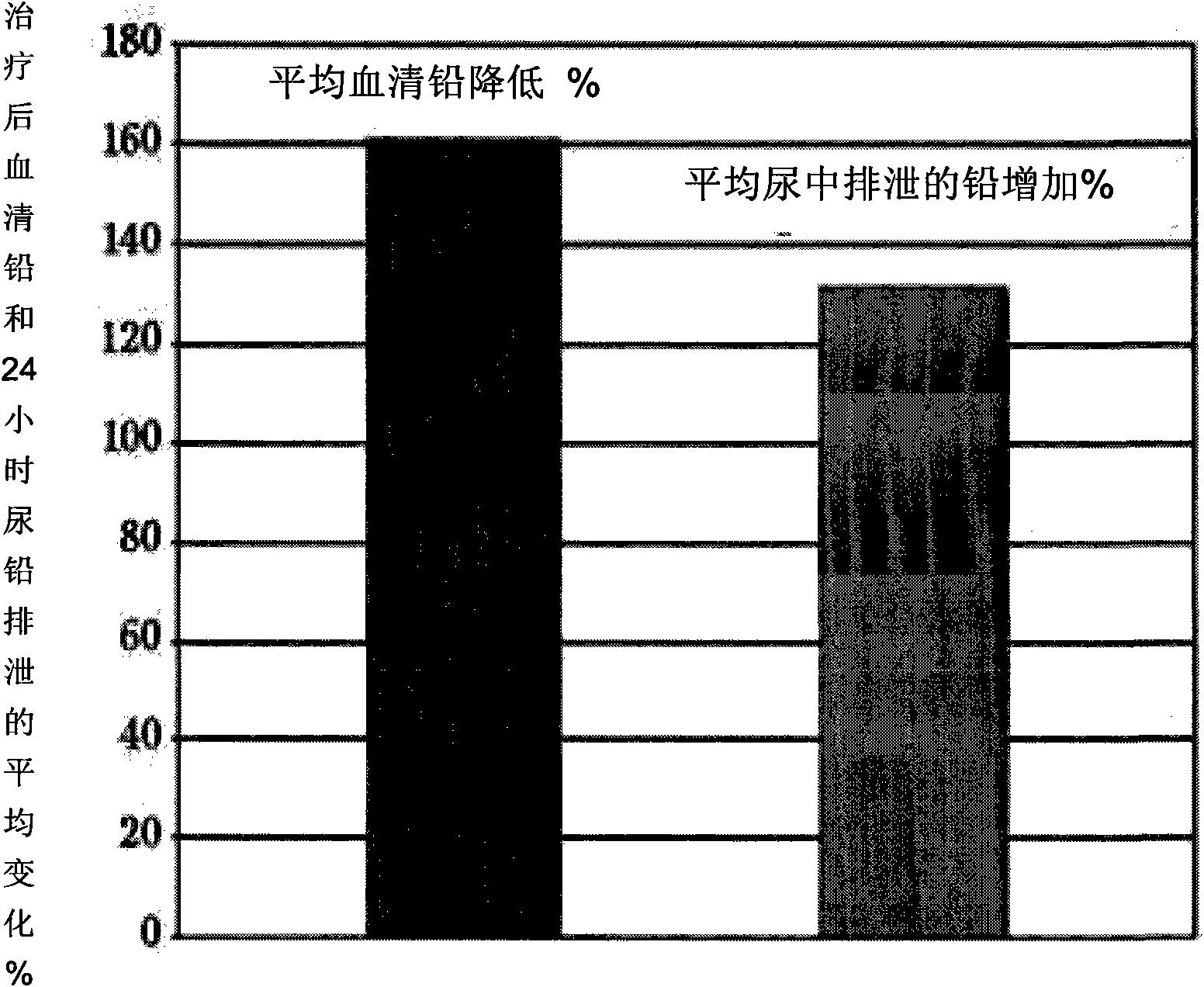Application of low molecular citrus pectin in clinic lead discharge and heavy metal discharge
A heavy metal, low molecular technology, applied in application, food preparation, food science and other directions, can solve the problem that natural citrus pectin does not have very effective functions in the human body
- Summary
- Abstract
- Description
- Claims
- Application Information
AI Technical Summary
Problems solved by technology
Method used
Image
Examples
Embodiment 1
[0027] Lead poisoning is an ongoing global concern, and children are the most vulnerable to the long-term effects of lead exposure. There is an urgent need for a safe and effective heavy metal chelator to overcome heavy metal and lead exposure, the challenges they face every day.
[0028] Objective 1: This clinical study was conducted to determine whether oral administration of low molecular weight citrus pectin is effective in reducing blood lead toxicity in children aged 5 to 12 years.
[0029] METHODS: Hospitalized children with serum lead levels above 20 μg / dL as determined by graphite furnace atomic absorption spectrometry were not given any chelating and / or detoxifying drugs within the first 3 months, and 15 g of low-molecular-weight citrus pectin per day , divided into 3 times to give. Serum from day 0, day 14, day 21, and day 28 and urine from day 24 were collected for graphite furnace atomic absorption analysis.
[0030] RESULTS: The present study showed a sharp decr...
Embodiment 2
[0052] This clinical study was conducted to determine whether oral administration of low molecular weight citrus pectin is effective in reducing heavy metal toxicity in adult urine.
[0053] 1 Effect of low molecular weight citrus pectin on the excretion of toxic elements in urine:
[0054] method:
[0055] 10 patients took 15 grams of low-molecular-weight citrus pectin per day for 7 days, and 20 grams on the 8th day
[0056] Urine samples were collected for 24 hours for measurement: Day 0, Day 1, Day 7.
[0057] The following elements were analyzed by inductively coupled plasma mass spectrometry (ICP-MS): calcium, magnesium, zinc, aluminum, arsenic, cadmium, calcium, mercury and lead.
[0058] result;
[0059] Such as Figure 5 As shown, urinary arsenic excretion was significantly increased in the first 24 hours (35% over mean baseline (day 0); p<0.05), and mercury and cadmium excretion was significant (55% and 135%; p<0.1)
[0060] Such as Figure 6 As shown, on day ...
Embodiment 3
[0062] Example 3 Effect of low molecular weight citrus pectin on the burden of mercury in the body for a long time
[0063] method:
[0064] Human clinical trials study 8 patients
[0065] Total body mercury baseline determination is the method of choice using dimercapto-1-propanesulfonic acid (DMS).
[0066] The daily oral dose of low molecular weight citrus pectin is 15 grams,
[0067] Determination of total body mercury by the same dimercaptan selection method after treatment with low molecular weight citrus pectin.
[0068] result:
[0069] Daily intake of 15 grams of citrus pectin Table Description:
[0070]
[0071] Summary of the results of low molecular weight citrus pectin in reducing mercury levels in the body
[0072] All subjects showed a significant decrease in mercury levels. The average decrease was 72.17%, the range was 38.13%-84.83% (P=0.0313), and there was no side effect.
PUM
 Login to View More
Login to View More Abstract
Description
Claims
Application Information
 Login to View More
Login to View More - R&D
- Intellectual Property
- Life Sciences
- Materials
- Tech Scout
- Unparalleled Data Quality
- Higher Quality Content
- 60% Fewer Hallucinations
Browse by: Latest US Patents, China's latest patents, Technical Efficacy Thesaurus, Application Domain, Technology Topic, Popular Technical Reports.
© 2025 PatSnap. All rights reserved.Legal|Privacy policy|Modern Slavery Act Transparency Statement|Sitemap|About US| Contact US: help@patsnap.com



